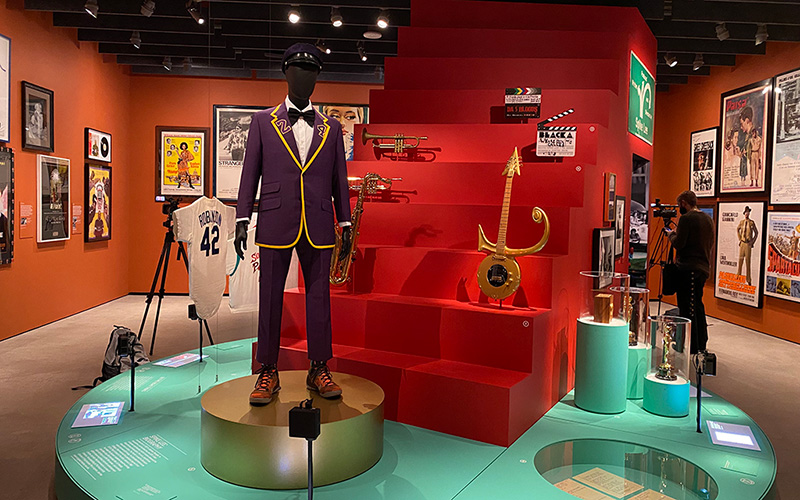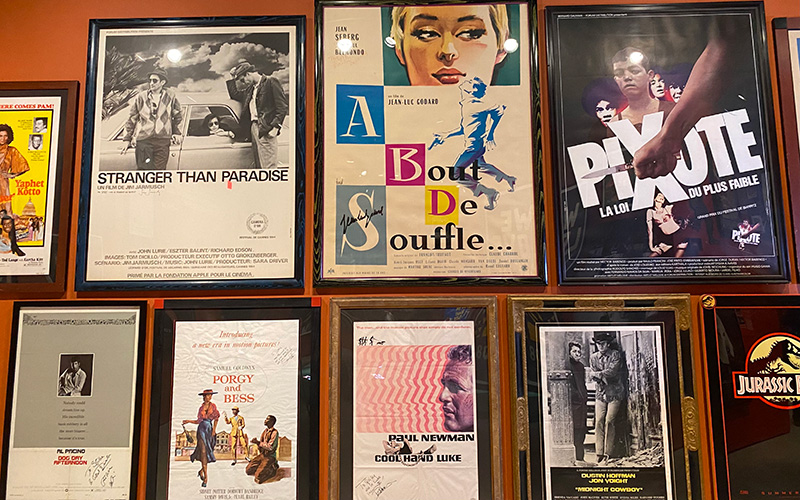
The museum is dedicated to preserving Tinseltown’s film history, but it also focuses on inclusivity and diversity in the film industry. (Photo by Amanda Day/Cronkite News)

Classic movie posters at the Academy Museum of Motion Pictures. (Photo by Amanda Day/Cronkite News)
LOS ANGELES – Almost a century in the making, the Academy Museum of Motion Pictures has opened the doors to its glittering 300,000-square-foot home in Mid City.
“Since 1929, when the first academy board and its president, Douglas Fairbanks, dreamt of a museum devoted to motion pictures, our governors through the decades have sought to realize that dream,” said David Rubin, president of the Academy of Motion Picture Arts and Sciences.
The museum is dedicated to preserving Tinseltown’s film history, with exhibits featuring such memorabilia as a pair of Dorothy’s ruby slippers from “The Wizard of Oz.” But it also focuses on inclusivity and diversity in the film industry.
Since 1929, the academy’s annual Oscar awards have been considered film’s highest honor, but in recent years, they have been criticized for their domination by white actors, directors, screenwriters and other artists.
CEO Dawn Hudson said the museum focuses on the “truth and reconciliation about our past.”
“We address all of those moments we’re not proud of and moments we are proud of within the Oscars and within the industry itself here in the museum,” Hudson said.
The Academy is trying to incorporate programs that include women and people of color, said Jacqueline Stewart, chief artistic and programming officer for the museum, adding that one room includes a gallery honoring Spike Lee, who directed “Do the Right Thing,” “Malcom X” and “BlacKkKlansman.”
“He’s a filmmaker who’s always taking up questions of race,” Stewart said. “He’s also mentored so many other artists of color, like Ruth E. Carter, the costume designer, Robi Reed the casting director, and so he (Lee) has been the instrument of diversifying the filmmaking for a long time.”
Stewart said there will be several opportunities to have conversations about ensuring a diverse film community. “Regeneration: Black Cinema 1898-1971,” set to open in 2022, will look at the history of African American filmmaking and feature directors, writers and performers, Stewart said.
Miky Lee, the vice-chair of the Academy Museum Board of Trustees, said she’s proud of the international films and filmmakers the museum highlights.
“I remember very clearly how I felt when “Parasite” won the Academy Award for best motion picture and director Bong spoke about how an entire world can open up when you watch a movie from another country,” Lee said. “Now the Academy Museum is giving the public an unprecedented opportunity to connect at any time with the experiences of people everywhere as seen through their films.”
Stewart said visitors can watch films in the 1,000-seat David Geffen Theater and 288-seat Ted Mann Theater, adding that the museum is pursuing a film program that’s as diverse as its galleries.
“We’re going to be hosting all kinds of retrospectives including a look at the films of Haile Germia, an Ethiopian American filmmaker,” Stewart said. The museum also will screen the films of Jane Campion, who won an Oscar for her screenplay for “The Piano” in 1994.
Tickets can be purchased online here. General admission is $25 for adults, $19 for seniors 62 and older, $15 for college students, free for age 17 or younger.
